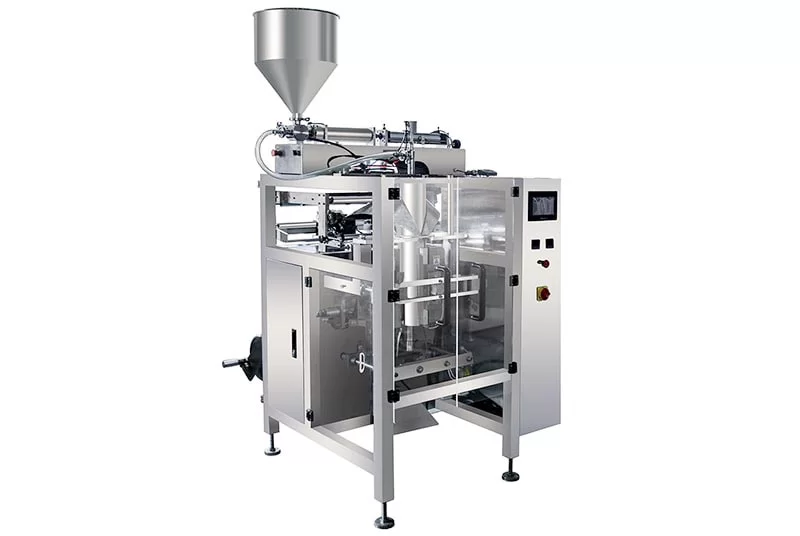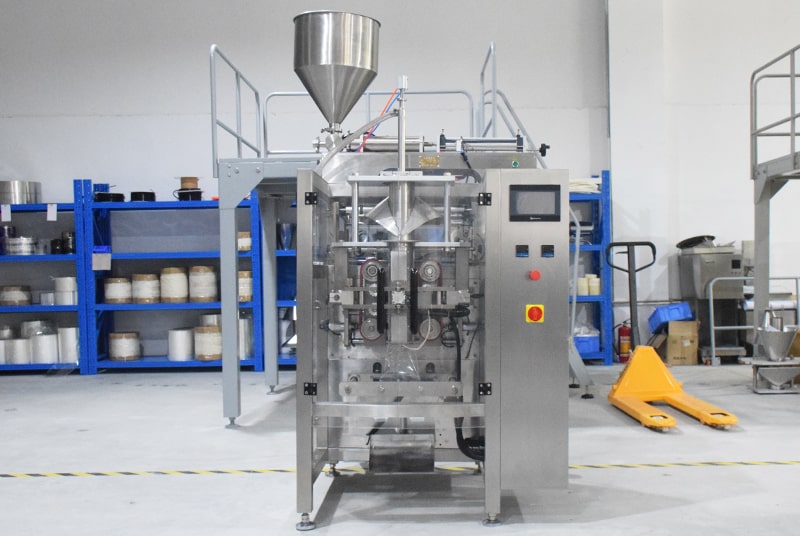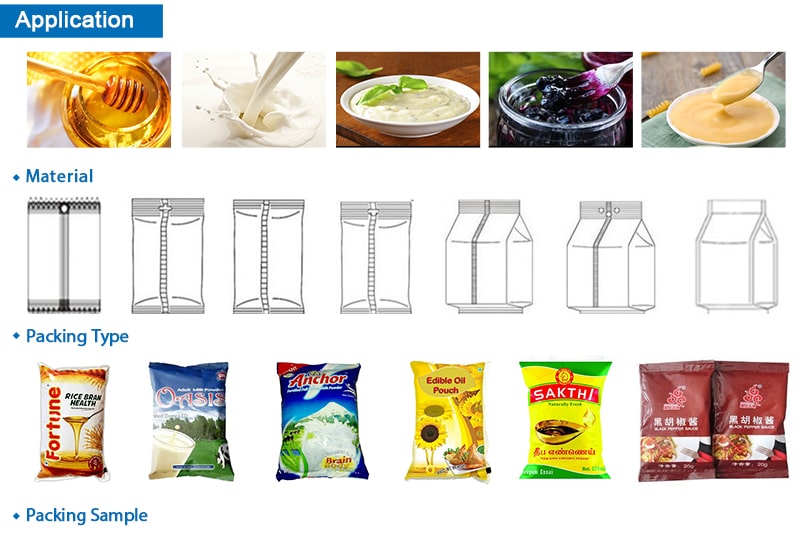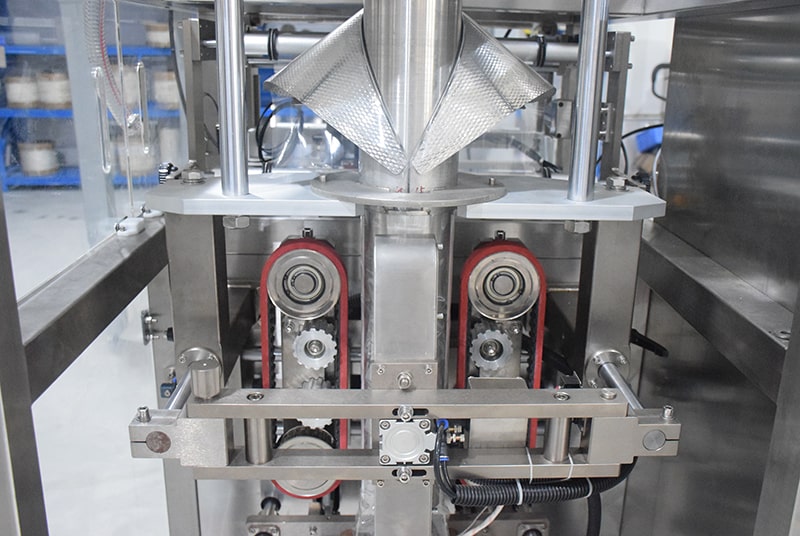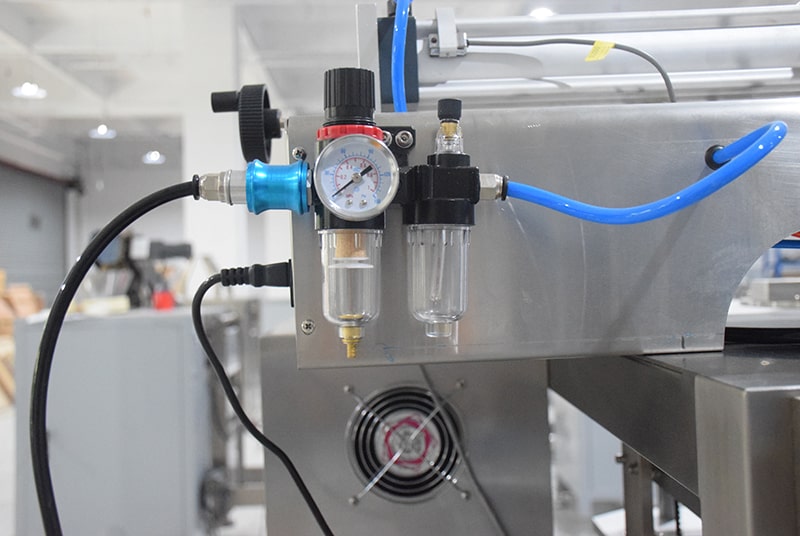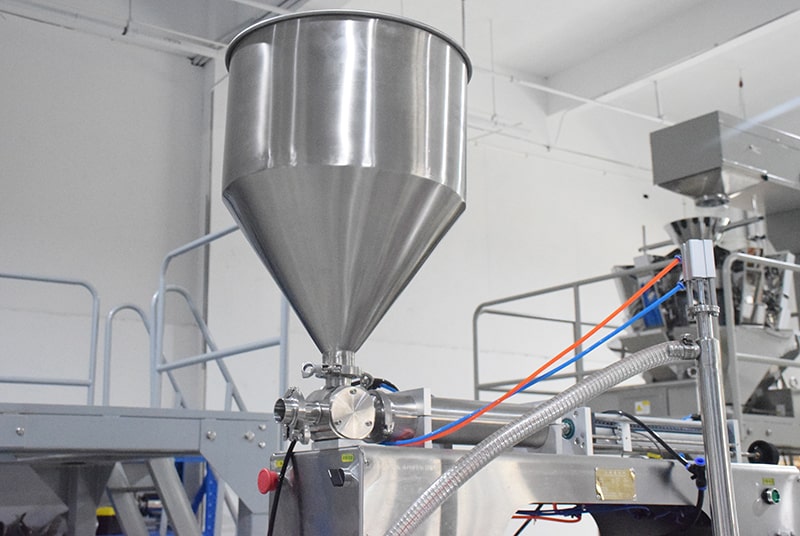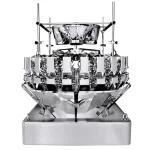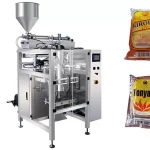150-2000ml Liquid Pouch Packaging Machine
Description
Application:
VFFS Fully automatic liquid packaging machine is suitable for packing various kinds of liquid objects, such as oli, water, juice, milk, honey, soysauce, ketchup, tomato sauce, etc.
Kindly Reminder:
We have experienced team of R & D engineers who can customize packaging solutions according to your product characteristics.
Packing Exambers:
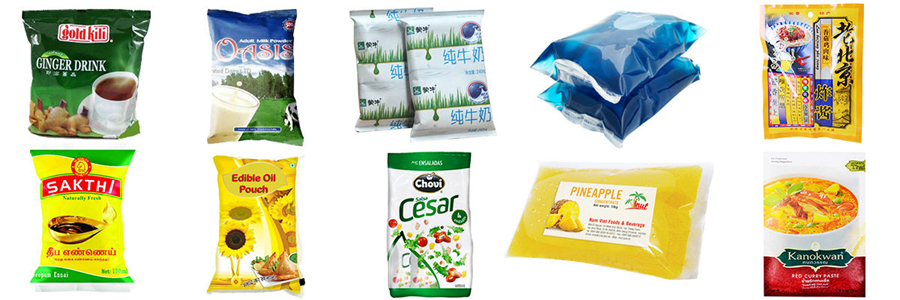
Products dosing, Filling, Laminate heat sealable pouch making and sealing.
Stainless steel 304 structure and surface.
Weighing and Packaging PLC & HMI Control Integrated, More stable operation, Easy for parameter setting.
Simple changing of pouch former, to adapt different pouch size requirement.
Intelligent temperature controlling configuration, ensure the artistic and neat sealing.
Configure with packaging film pre-pulling device, to enable stable pouch making.
No film no filling, and easy to change the packaging film.
Parameter
| Model | 420L | 520L |
| Film Width | Max.420mm | Max.520mm |
| Bag Length | 80-300mm | 80-350mm |
| Bag Width | 60-200mm | 100-250mm |
| Range of Measurement | 150-1500ml | 2000ml |
| Film Roll Diameter | Max.320mm | Max.320mm |
| Packaging Rate | 10-60bag/min | 10-60bag/min |
| Power | 220V 50/60Hz 2KW | 220V 50/60Hz 3KW |
| Machine Size(L*W*H) | 1217*1015*1343mm | 1488*1080*1490mm |
| Machine Quality | About 650kg | About 680kg |
| Optional device | 1.Date Printing, 2.Hole Punching Device, 3.Air-filling Device, 4.Tear Notch Device | |
The introduction of a 150-2000ml Liquid Pouch Packaging Machine can help to optimize your packaging process. This machine is designed to provide an efficient and cost-effective way to package liquid products, such as beverages, sauces, and syrups. The machine features a high-speed production line with advanced automation technology, allowing for faster and more accurate packaging. It also has adjustable settings that allow you to customize the size of the pouches for different products. Additionally, it offers a wide range of pouch sizes from 150ml to 2000ml, giving you the flexibility to meet your packaging needs. With its user-friendly operation and reliable performance, this machine is an ideal choice for businesses looking to streamline their packaging process.
Analyzing Production Line Efficiency for Optimal Performance with a 150-2000ml Liquid Pouch Packaging Machine
The production line efficiency of a 150-2000ml liquid pouch packaging machine is essential for optimal performance. This type of machine is used to package liquids in pouches, which are then sealed and cut to size. The production line efficiency of the machine can be improved by analyzing various factors such as the speed of the machine, the accuracy of the cutting and sealing process, and the overall productivity.
To analyze production line efficiency, it is important to measure key performance indicators such as cycle time, throughput rate, and quality. Cycle time measures how long it takes for a pouch to move from one station to another in the production line. Throughput rate measures how many pouches can be processed per hour. Quality measures how accurately each pouch is cut and sealed. By measuring these key performance indicators, any potential bottlenecks in the production line can be identified and addressed.
In addition to measuring key performance indicators, other techniques such as root cause analysis can be used to improve production line efficiency. Root cause analysis involves identifying potential causes of problems or inefficiencies in the production process and then developing solutions to address them. For example, if a pouch is not being cut or sealed correctly, root cause analysis can help identify what may be causing this issue so that corrective action can be taken.
By analyzing production line efficiency with a 150-2000ml liquid pouch packaging machine, optimal performance can be achieved while minimizing costs and maximizing profits.
Evaluating Machine Maintenance Strategies for Maximum Output
Evaluating machine maintenance strategies for maximum output is a critical component of any successful industrial operation. Proper maintenance of machinery is essential to ensure that machines are running efficiently and safely, while also minimizing downtime and maximizing productivity. By implementing an effective maintenance strategy, businesses can reduce costs associated with repairs and replacement parts, as well as improve overall machine performance.
When evaluating machine maintenance strategies, it is important to consider the type of machinery being used, the environment in which it operates, and the frequency of use. For example, some machines may require more frequent maintenance than others due to their complexity or the nature of their operation. Additionally, certain environmental conditions may require additional preventive measures to ensure that machines are operating at peak efficiency.
In order to maximize output from machines, it is important to develop a comprehensive maintenance plan that includes regular inspections and preventive maintenance tasks such as lubrication and cleaning. Regular inspections should be conducted by qualified personnel who are familiar with the specific type of machinery being used. Additionally, preventive maintenance tasks should be completed on a regular basis in order to ensure that all components are functioning properly and no potential problems exist.
By implementing an effective machine maintenance strategy, businesses can ensure that their machines are running at optimal levels while also reducing costs associated with repairs and replacement parts. This will ultimately result in increased productivity and improved profitability for the business.
Exploring Automation Options to Enhance Productivity
Exploring automation options to enhance productivity is an important consideration for businesses looking to maximize efficiency and minimize costs. Automation can help streamline processes, reduce manual labor, and improve accuracy. Automation can also be used to automate mundane tasks, such as data entry or customer service inquiries, freeing up employees’ time for more important tasks. Automation can also help reduce errors and increase consistency across processes.
Automation options vary depending on the needs of the business. Some automation solutions may include software applications that are designed to automate specific tasks or processes, such as customer service or data entry. Other automation solutions may include robotic process automation (RPA) tools that can automate repetitive tasks and processes across multiple systems. Additionally, businesses may explore the use of artificial intelligence (AI) and machine learning (ML) to automate complex processes and decisions.
Businesses should carefully consider their needs when exploring automation options to ensure they choose the right solution for their business. It is important to consider factors such as cost, scalability, ease of use, security, and compatibility with existing systems when selecting an automation solution. Additionally, businesses should ensure that any automated solutions they implement comply with applicable laws and regulations in their industry.
Overall, exploring automation options can be a great way for businesses to enhance productivity while reducing costs and increasing efficiency. By carefully considering their needs and selecting the right solution for their business, businesses can reap the benefits of automated solutions while ensuring compliance with applicable laws and regulations.
Examining Quality Control Procedures to Ensure Consistent Results
Quality control procedures are essential for ensuring consistent results in any production process. Quality control involves inspecting, testing, and evaluating products and services to ensure they meet the established standards of quality. Quality control procedures should be established and documented to ensure that the same processes are followed each time a product or service is produced.
The first step in establishing quality control procedures is to define the desired outcome of the product or service. This includes setting specifications for the product or service that must be met in order for it to be considered acceptable. Once these specifications have been established, quality control procedures can be implemented to ensure that these standards are met consistently.
These procedures typically involve inspecting each item before it is shipped out, testing it to make sure it meets the required specifications, and evaluating it for any defects or flaws. If any defects are found, they must be addressed immediately so that they do not affect future products or services. Additionally, quality control procedures should also include regular reviews of production processes to ensure that they are being followed correctly and consistently.
Quality control procedures help to ensure that products and services meet their desired outcomes consistently and reliably. By implementing these procedures, businesses can reduce costs associated with defective products and improve customer satisfaction by providing consistent results each time a product or service is produced.
Utilizing Advanced Technologies to Streamline the Packaging Process
Utilizing advanced technologies to streamline the packaging process can help companies improve their operational efficiency and reduce costs. Automated packaging systems can be used to increase the speed and accuracy of packing, reduce manual labor, and improve safety. Advanced technologies such as robotics, vision systems, sensors, and artificial intelligence can be used to automate the packaging process. Robotics can be used to pick and place items into boxes or other containers with greater accuracy than manual labor. Vision systems can be used to inspect items for quality control purposes before they are packed. Sensors can detect when a package is full or if there are any defects in the product that need to be addressed. Artificial intelligence can be used to identify patterns in data and suggest improvements in the packaging process. Utilizing these advanced technologies can help companies save time, money, and resources while ensuring that products are packed correctly and safely.
Conclusion
The use of a 150-2000ml Liquid Pouch Packaging Machine can be an effective way to optimize your packaging process. This machine is designed to provide efficient and accurate filling, sealing, and labeling of liquid pouches. It can help reduce costs associated with manual labor, increase production speed, and improve product quality. Additionally, the machine is easy to use and maintain, making it a great choice for businesses looking to streamline their packaging process. With its reliable performance and cost-effectiveness, the 150-2000ml Liquid Pouch Packaging Machine is an ideal solution for businesses looking to optimize their packaging process.


